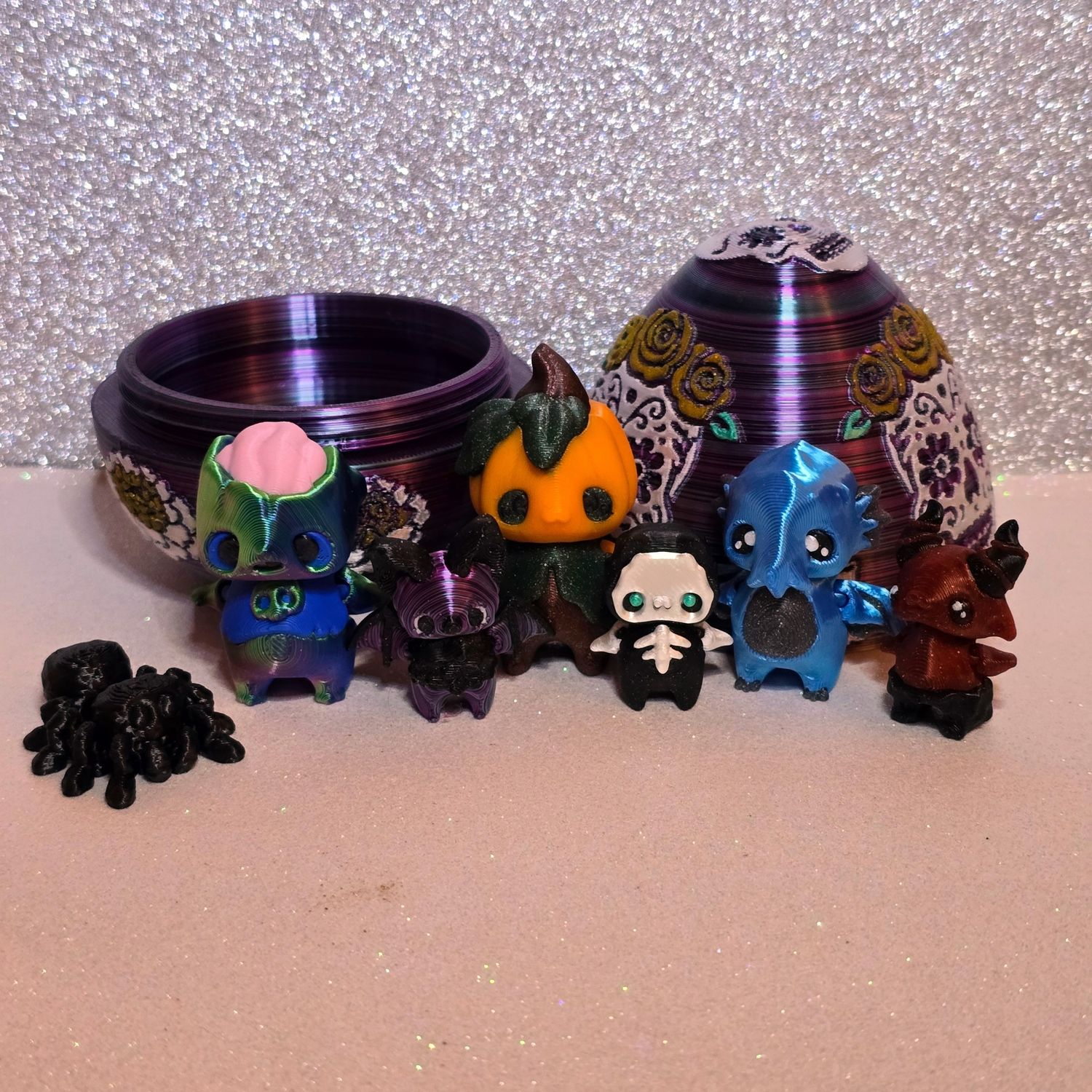Sugar Skull and Mini Halloween Fidgets
Sugar Skull egg includes mini spider, zombie, pumpkin, cthulu and micro mini skeleton, bat and beast.
Sugar skulls, or calaveras de azúcar, are a vibrant and symbolic part of Día de los Muertos (Day of the Dead), a Mexican tradition honoring loved ones who have passed. Here’s a breakdown for you, Kristi:
Origins
They date back to the early colonial period, when Mexican artisans adapted European sugar-molding techniques.
Sugar was abundant and cheap, so it became a medium for making edible offerings.
Symbolism
Sugar skulls represent the duality of life and death—bright, playful decorations reminding us that death isn’t to be feared but embraced as part of the cycle.
They’re placed on altars (ofrendas) with flowers, candles, and food to welcome the spirits of ancestors.
Design
Traditionally made from sugar paste, pressed into skull molds, and decorated with colorful icing, sequins, and foil.
The colors symbolize vitality, joy, and remembrance—not mourning.
Sometimes, the name of the deceased (or even the living, as a playful gesture) is written on the forehead.
Modern Context
Beyond Mexico, sugar skulls have become popular in art, tattoos, and fashion—though some criticize commercialization and cultural appropriation.
They’re still deeply spiritual in their original context: a sweet celebration of memory, love, and connection.

